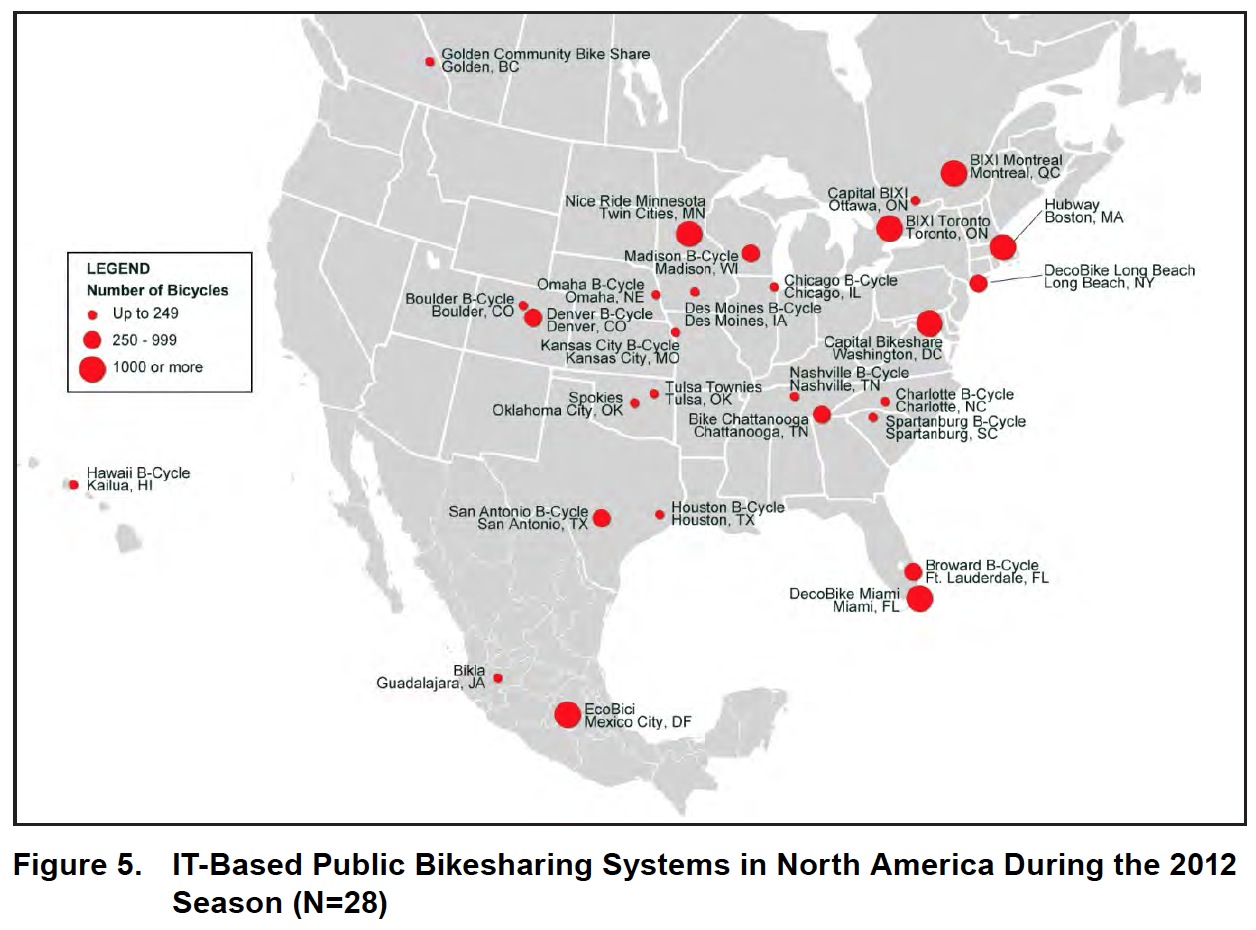MINETA TRANSPORTATION INSTITUTE
Executive Summary
Public bikesharing is the shared use of a bicycle fleet by the public. Since the mid-2000s, it has been growing rapidly across the globe. This report focuses on recent developments in public bikesharing in Canada, the U.S., and Mexico. The years of 2012 and 2013, in particular, represent a period of rapid expansion, as reflected in this Phases II study. This report builds upon earlier research conducted by the authors in 2011-2012 (Phase I) (Shaheen et al., 2012). Since 1965, bikesharing has grown across the globe including Europe, North America, South America, Asia, Australia, and the Middle East (Shaheen et al., 2010).
As of June 2014, public bikesharing programs existed on five continents, including 712 cities, operating approximately 806,200 bicycles at 37,500 stations (Russell Meddin, unpublished data, June 2014). In addition, some large colleges, universities, and employers are participating in bikesharing to serve their students, faculty, and employees. Please note that this report does not include college/university or employer bikesharing programs, as they are typically not accessible by the general public.
The principle of public bikesharing is simple: Bikesharing users access bicycles on an as-needed basis. IT-based bikesharing1 can be facilitated through a network of stations (typically unattended) or through dockless bikesharing where riders use their mobile electronic devices to find the current location of a nearby bikesharing bicycle. Bikesharing provides a variety of pickup and drop-off locations, enabling an on-demand, very low emission form of mobility. The majority of bikesharing programs cover the cost of bicycle maintenance, storage, and parking. Trips can be point-to-point, round-trip, or both, allowing the bikes to be used for one-way transport and for multimodal connectivity. Generally, trips of less than 30 minutes are free.
Users join the bikesharing organization on an annual, monthly, or daily basis. Members can pick up a bike at any dock by using their credit card, membership card, key, or key-fob, and/or a mobile phone. When members finish using the bike, they can return it to any dock (or the same dock in a round-trip service) where there is room and end their session. Note that “per-trip” usage—the usage of a bikesharing bicycle for a small fare (comparable to a one-way transit fare) on a per-trip basis—has been discussed and proposed in North America; however, it has not yet been implemented to date.
By addressing the storage, maintenance, and secure parking aspects of bicycle ownership, bikesharing encourages cycling among users who may not otherwise use bicycles. Additionally, the availability of a large number of bicycles in multiple dense, nearby locations frequently creates a “network-effect,” further encouraging cycling and, more specifically, the use of public bikesharing for regular trips (e.g., errands, commuting).
Download full version (PDF): Public Bikesharing in North America During a Period of Rapid Expansion
About Mineta Transportation Institute
transweb.sjsu.edu
The Mineta Transportation Institute (MTI) conducts research, education, and information and technology transfer, focusing on multimodal surface transportation policy and management issues. It was established by Congress in 1991 as part of the Intermodal Surface Transportation Efficiency Act (ISTEA) and was reauthorized under TEA-21 and again under SAFETEA-LU. The Institute is funded by Congress through the US Department of Transportation’s (DOT) Research and Innovative Technology Administration, by the California Legislature through the Department of Transportation (Caltrans), and by other public and private grants and donations, including grants from the US Department of Homeland Security.
Tags: Bicycling, Bike Share, Bikesharing, Cycling, Mineta Transportation Institute, MTI







 RSS Feed
RSS Feed